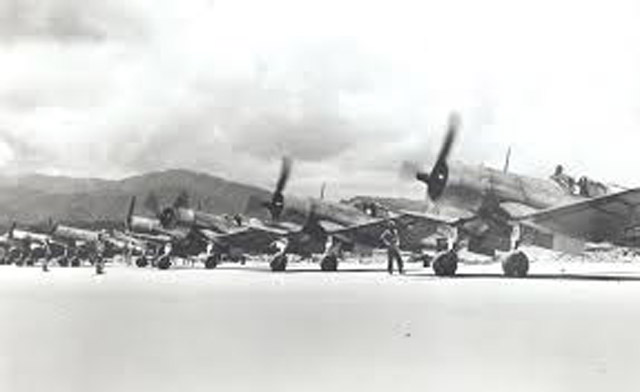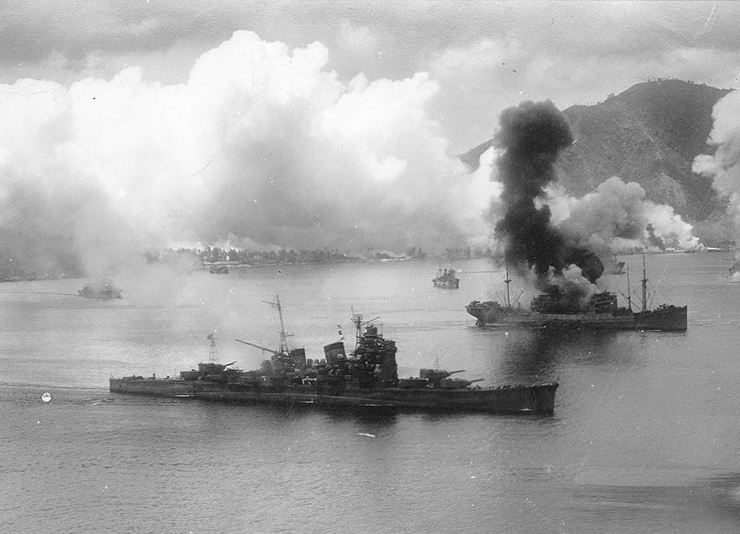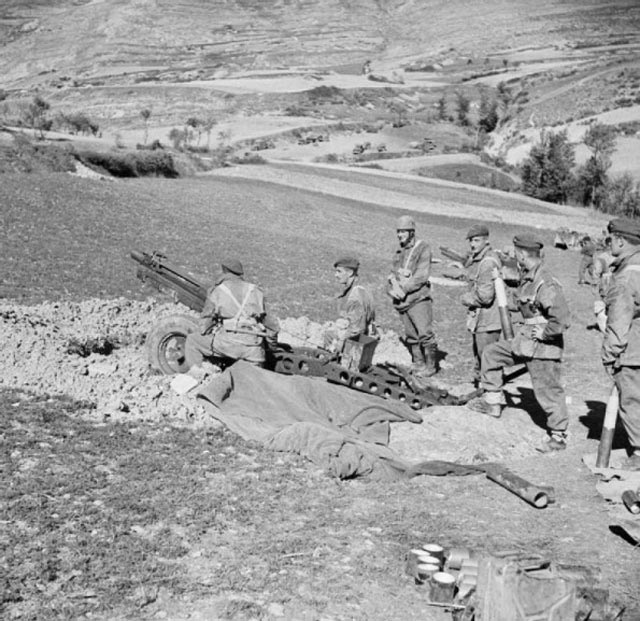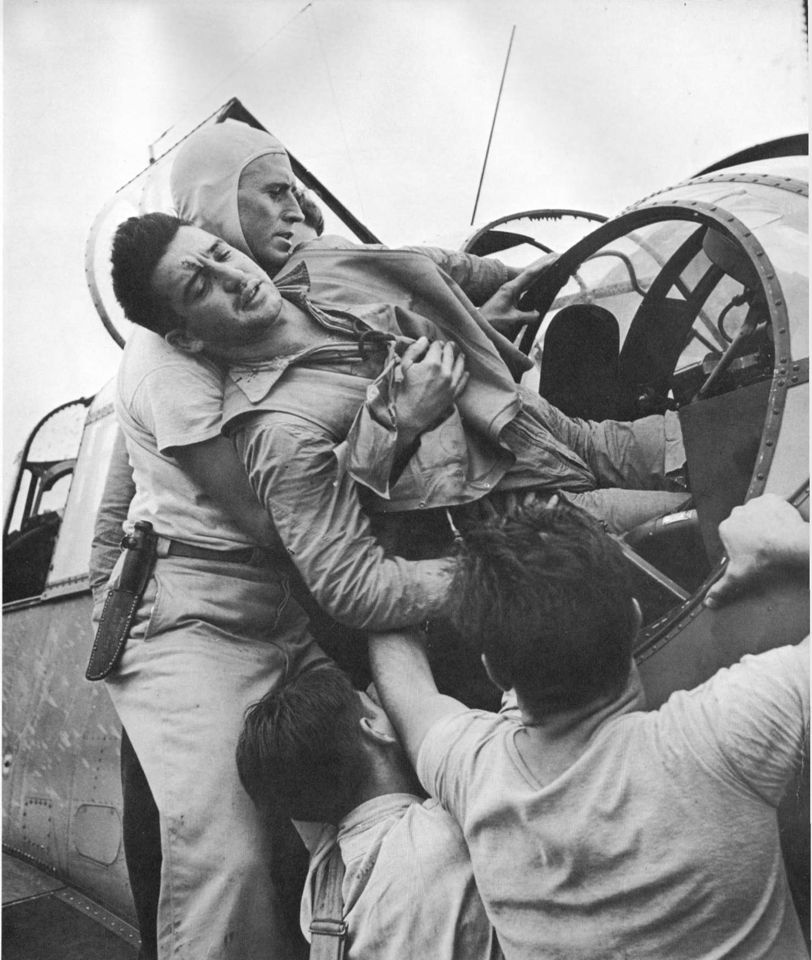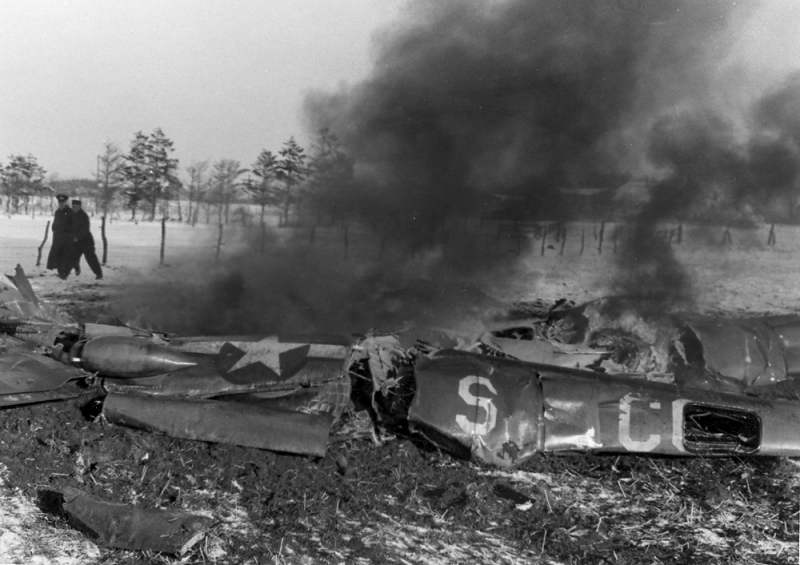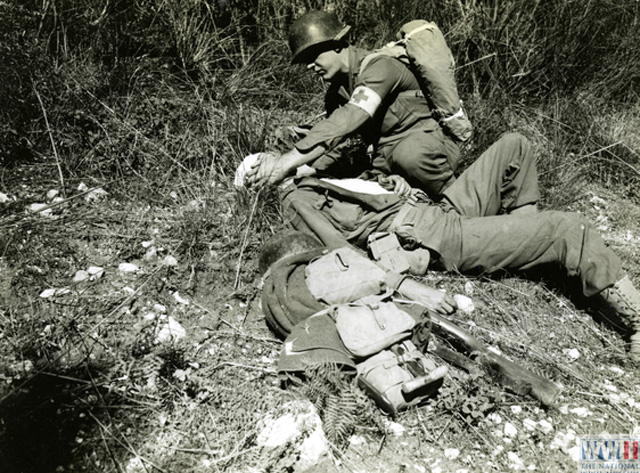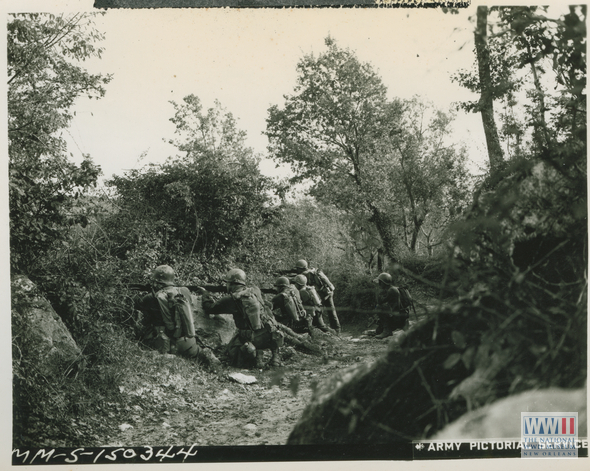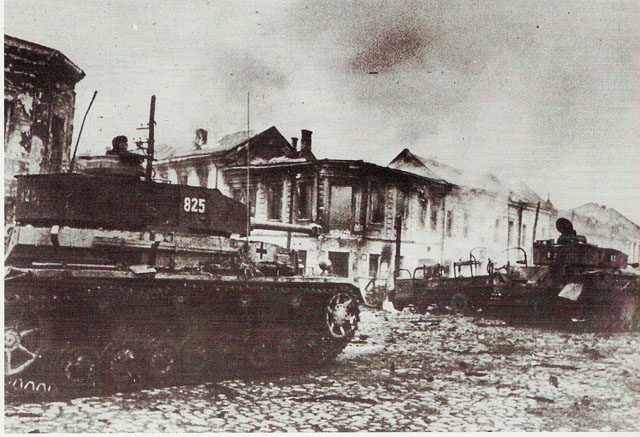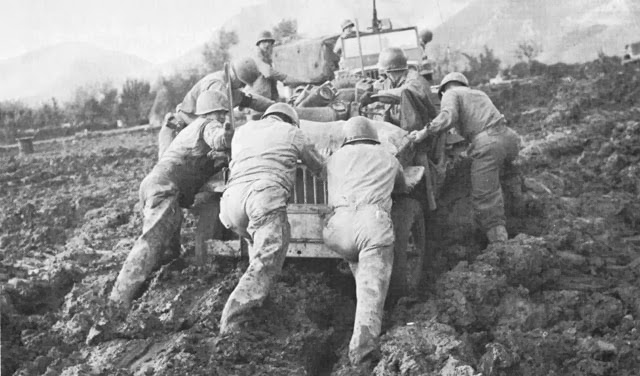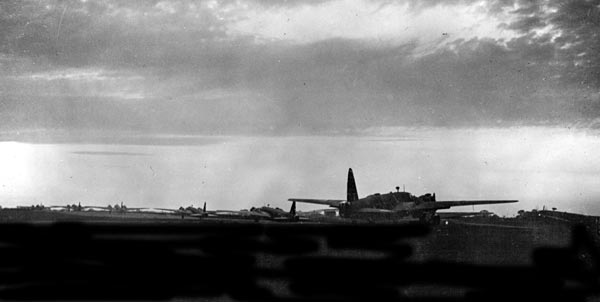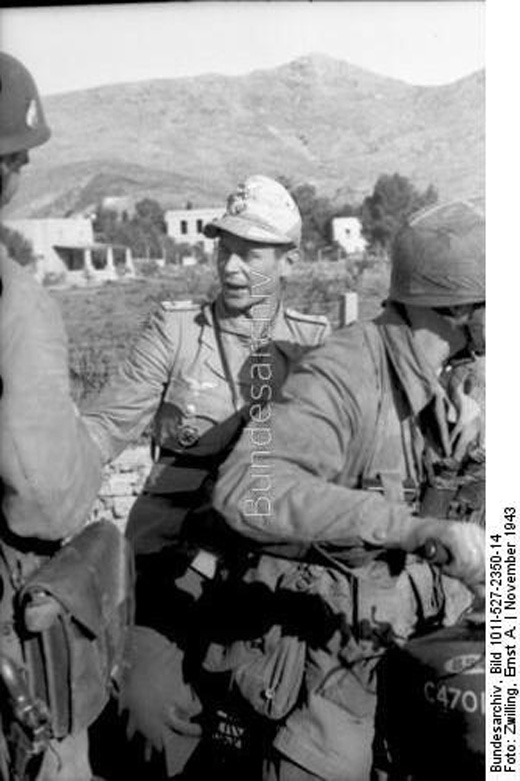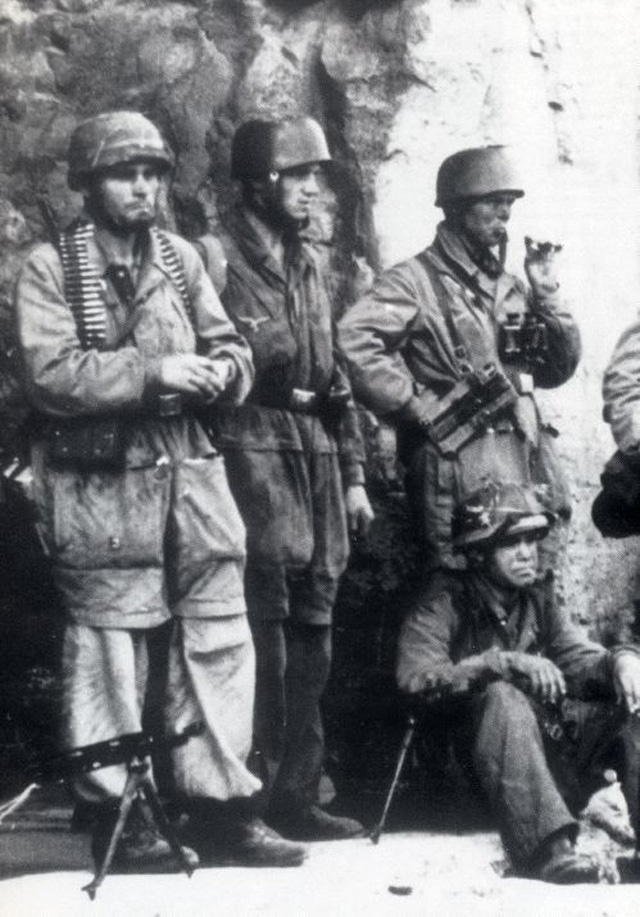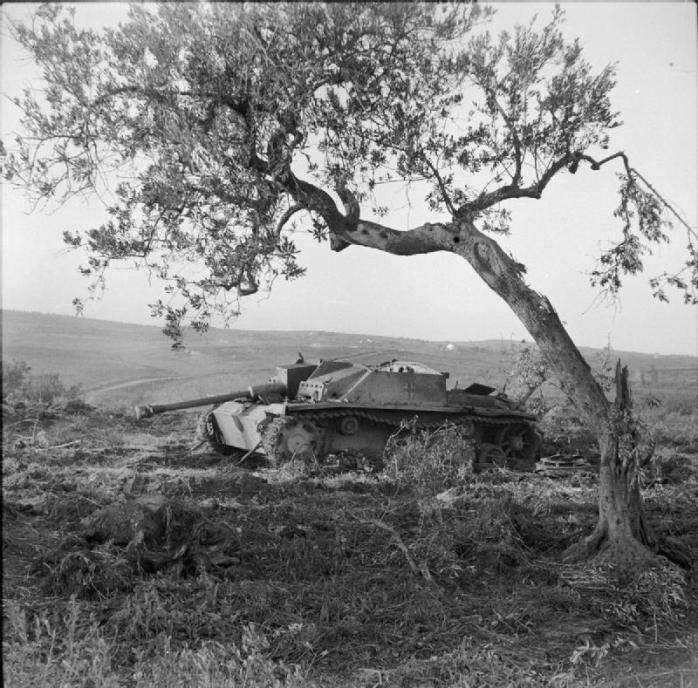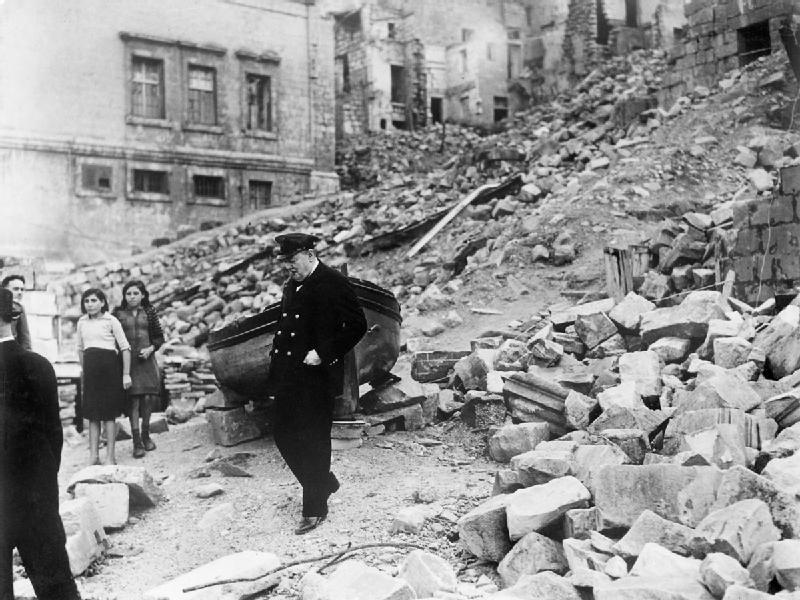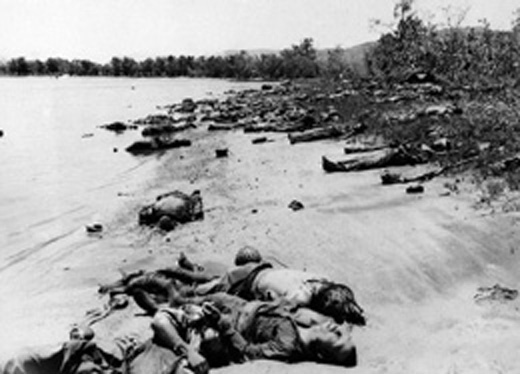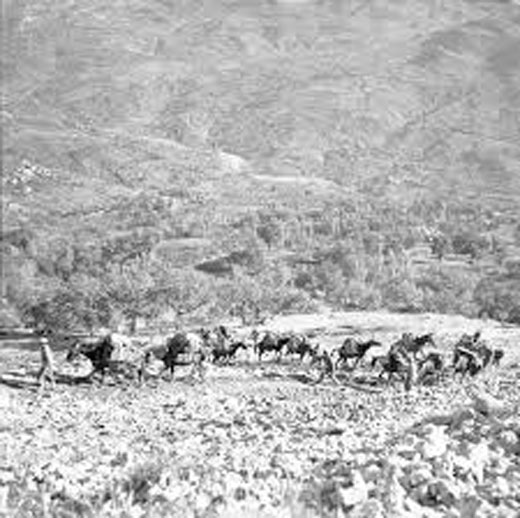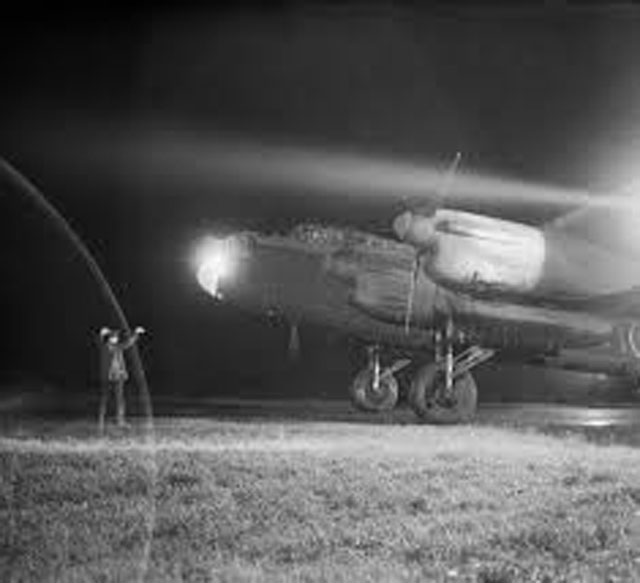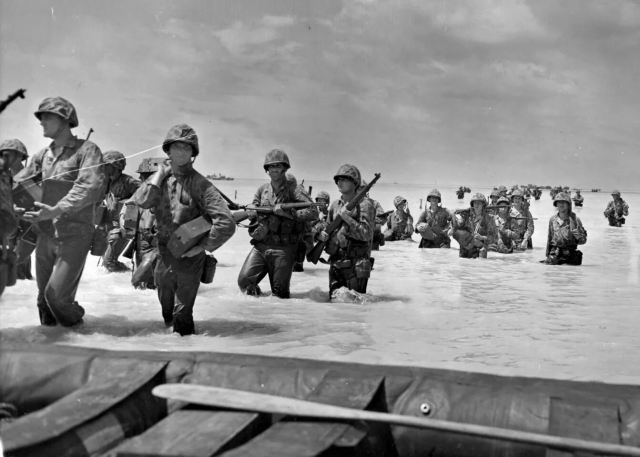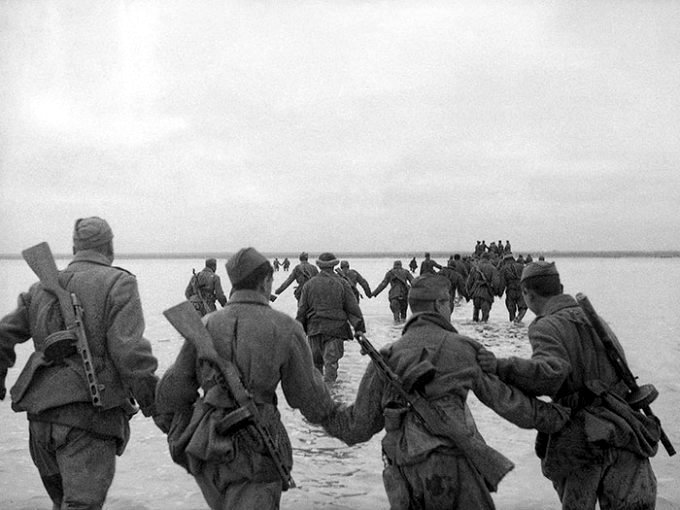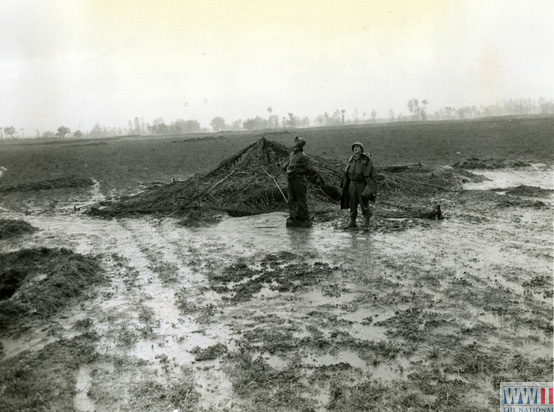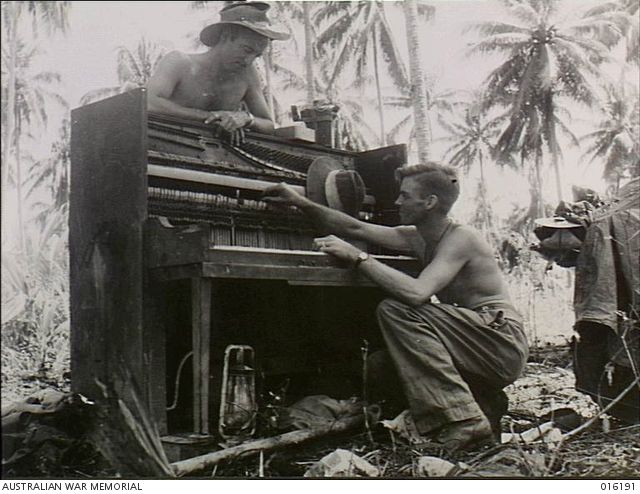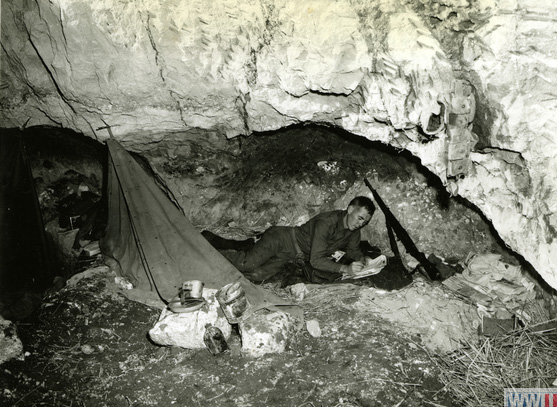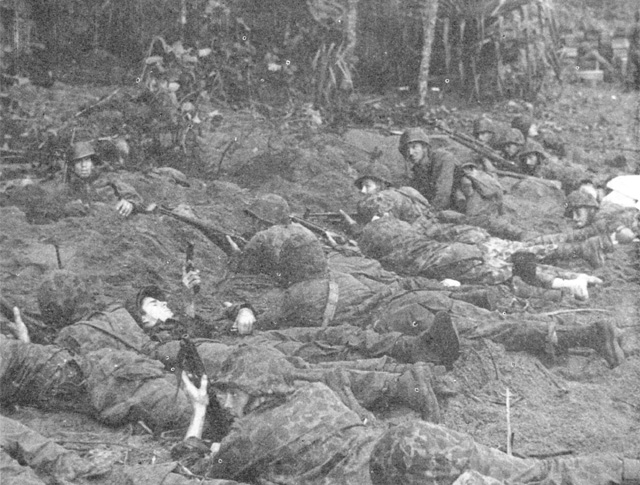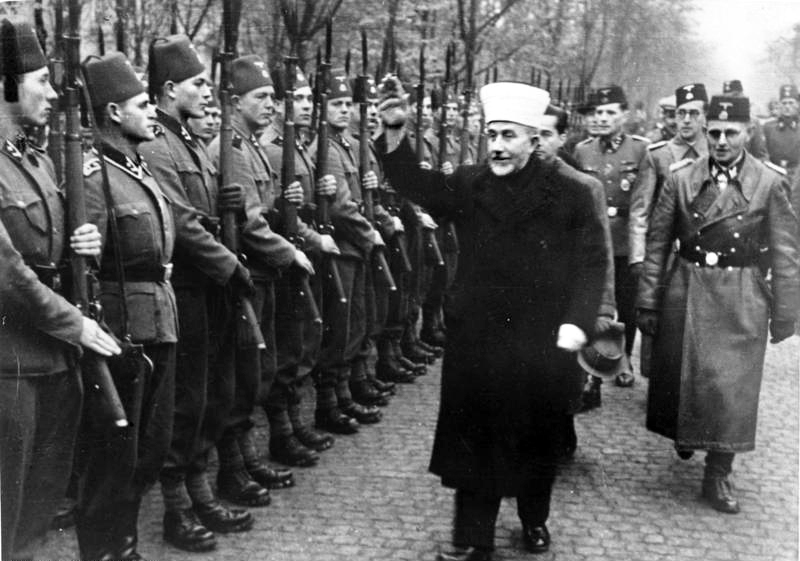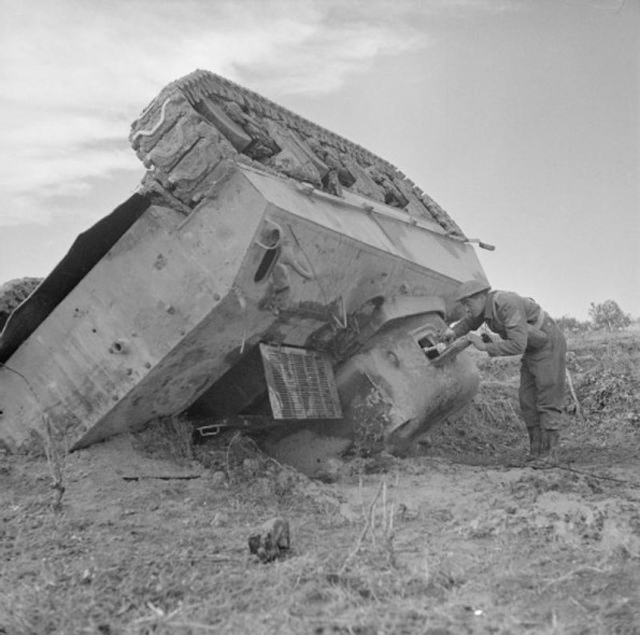Air Operations, Bismarcks
- 2 347th Fighter Group P-38s down a G4M 'Betty' bomber near Cape St. George at 0950 hours. This is the first victory by Solomons-based fighters in the Bismarck Archipelago.
- Japanese Navy carrier aircraft—40 B5N 'Kate' torpedo bombers, 45 D3A 'Val' dive bombers, 82 A6M Zeros, and six reconnaissance aircraft—arriving at Rabaul from Japan by way of Truk Atoll bolster the approximately 200 aircraft already based there.
- During the night, 2 394th Heavy Bomb Squadron SB-24s attack a convoy west of Cape St. George.
Air Operations, CBI
CHINA- 6 11th Medium Bomb Squadron B-25s and 9 P-40s attack the rail yards at Yoyang.
Air Operations, Europe
RAF BOMBER COMMANDEvening Ops:
- 589 aircraft are sent to Düsseldorf. Included in this total are 344 Lancasters, 233 Halifaxes and 12 Mosquitos.
- The main weight of the raid falls on the center and south of the city with extensive damage done to both housing and industrial sites.
- 11 Lancasters and 7 Halifaxes are lost.
- 38 Lancaster IIs of Nos. 3 and 5 Groups make the first large-scale test of the G-H blind bombing device and attempt to bomb the Mannesmann tubelar steel works in the northern outskirts of Düsseldof while the main raid is going on. 5 planes return early, 2 are lost and the equipment in 16 other aircraft fails to function leaving only 15 to bomb the factory on G-H. The device will become a most useful blind-bombing device when it is produced in sufficient numbers for a major portion of Bomber Command to be fitted with it.
- 52 Lancasters and 10 Mosquitos of No. 8 Group carry out a diversionary raid on Cologne without a loss.
- 13 Oboe Mosquitos are sent to attack the Krupps foundry at Rheinhausen, 2 Mosquitos are sent to Dortmund, 23 aircraft of No. 3 Group lay mines in the Frisians and there are 27 OTU sorties.
- 1 OTU Whitley is lost.
US 15th AIR FORCEA further Victoria Cross is awarded for an action during the Düsseldorf raid. The Lancaster of Flight Lieutenant William Reid, No 61 Squadron, is twice attacked by night fighters before the target is reached. The aircraft suffers extensive damage, which puts most of its guns out of action; the navigator is killed and the wireless operator fatally injured. Flight Lieutenant Reid is wounded in both attacks and his flight engineer is also hurt but Reid presses on for the remaining 200 miles to the target and his bomb aimer, Sergeant L.G. Rolton, obtains an 'aiming point photograph'. The return flight is full of problems. The cockpit windscreen is shattered and the oxygen supply fails. The pilot lapses into semi-consciousness and the injured flight engineer, Sergeant J.W. Norris, has to do some of the flying. Flight Lieutenant Reid recovers to take over for the emergency landing in misty conditions which takes place at Shipdham in Norfolk, even though he can not see properly for blood running into his eyes from a head wound. One leg of the Lancaster's under-carriage collapses but the landing is otherwise successful. Flight Lieutenant Reid is awarded the Victoria Cross but the Squadron Operations Record Book does not say whether other crew members were decorated.
ITALY:
- On the day it becomes operational, the new 15th Air Force dispatches the B-17s of all four groups of its 5th Heavy Bomb Wing from their bases in Tunisia against the former Italian naval base at La Spezia, in northern Italy, and against a nearby rail bridge at Vessano.
- The 47th Medium Bomb Wing B-25s attack marshalling yards at Ancona and transportation and tactical targets in or near the battle area.
- NATAR aircraft attack shipping and port facilities at Split.
Air Operations, Mediterranean
A 57th Fighter Group P-40 downs 1 Do-24 rescue-and-reconnaissance flying boat at sea during the afternoon.
[Air Operations, Solomons
- Covered by 3 AirSols F4U squadrons and assisted by naval gunfire, 31 Marine Corps TBFs and 8 VC-38 SBDs attack the Cape Torokina invasion beaches in Bougainville’s Empress Augusta Bay ahead of the lead waves of the US 3rd Marine Division.
- Commencing Operation RO, a plan for the defense of the northern Solomon Islands,Japanese Navy air attacks against the invasion fleet delay unloading operations, but the invasion is considered successful despite the fierce opposition of a small defense force that restricts the Marines to a shallow beachhead.
- AirSols fighters based in the central Solomons provide extensive cover for the invasion force, and AirSols land-based and US Navy carrier-based fighters and light bombers from Task Force 38, as well as US surface warships completely neutralize the now-bypassed Japanese Navy airbases in southern Bougainville and the Shortland Islands. Nevertheless, at 0735 hours, 9 Rabaul-based D3A 'Val' dive bombers, escorted by 44 A6M Zeros, attack the invasion flotilla through an AirSols covering force of 8 VF-17 F4Us and 8 RNZAF Kittyhawks. One US destroyer is lightly damaged by a near miss. A second Rabaul-based air attack in the early afternoon results in no damage, but 1 US transport runs aground while maneuvering to avoid the bombers.
- RNZAF Kittyhawks down 7 A6M Zeros and VF-17 F4Us down 5 A6M Zeros over Empress Augusta Bay between 0745 and 0800 hours. 347th Fighter Group P-38s down 7 Zeros over Empress Augusta Bay between 0810 and 0820. VF-17 F4Us down 1 Zero over Empress Augusta Bay at 1330 hours. VMF-215 F4Us down 4 Zeros and 1 B5N 'Kate' bomber over Empress Augusta Bay between 1345 and 1347 hours. 4 Allied fighters are lost during the day.
- 21 XIII Bomber Command B-24s attack the Kahili airfield on Bougainville while AirSols B-24s, SBDs, and fighters attack the Kara airfield on Bougainville. 42nd Medium Bomb Group B-25s attack barges and docks at Faisi.
- During the night, 2 394th Heavy Bomb Squadron SB-24s locate a Japanese Navy surface task force speeding toward the Empress Augusta Bay invasion fleet. They sound the alarm and attack the Japanese flagship, a heavy cruiser. This action precipitates the Battle of Empress Augusta Bay, a decisive night naval surface engagement that forces the Japanese force to retire following the loss of a light cruiser and destroyer to gunfire from USN surface warships.
Air Operations, Tunisia
The 15th Air Force is activated at Tunis under the command of Maj-Gen James H. Doolittle. Headquarters, XII Bomber Command, is redesignated Headquarters, 15th Air Force, a move that effectively disbands the XII Bomber Command. Initially, the new air force consists of the 5th Heavy Bombardment Wing, composed of 4 B-17 groups (2nd, 97th, 99th and 301st) and 2 B-24 groups (98th and 376th); the 42nd Medium Bombardment Wing, composed of 3 B-26 groups (17th, 319th, and 320th); the 47th Medium Bombardment Wing, composed of 2 B-25 groups (310th and 321st); the new 306th Fighter Wing, composed of 3 P-38 groups (1st, 14th, and 82nd) and 1 P-40 group (325th); and the veteran but newly redesignated 68th Tactical Reconnaissance Group.
[Arctic
The first in a new series of Arctic convoys sails from the Kola Inlet to Loch Ewe and arrives without loss on November 14. Of the next 3 convoys only 1 is attacked and the only damage is to an attacking U-boat. These operations are completed by December 9.
[Battle of the Atlantic
The German submarine U-405 and the American destroyer Borie (DD-215) fight an epic duel in the eastern Atlantic. They collide and hand-to-hand fighting ensues. Both sink, the U-boat this day and the destroyer on the 2nd.
| Class | Type VIIC |
| CO | Kapitänleutnant Rudolf Hopman |
| Location | Atlantic, N of the Azores |
| Cause | Depth charge/ramming |
| Casualties | 49 |
| Survivors | None |
Eastern Front
The Soviets take Perekop and advance to Armyansk at the base of the peninsula, thus isolating the Crimea. Manstein's forces around Krivoy Rog begin a series of counterattacks which temporarily hold the Soviet advance. Berlin claims 'great successes'. Part of the Soviet 56th Army is landed in the Crimea east of Kerch near Enikale and also at Eltigen. During the next week 18th Army reinforcements are landed, but German light naval craft establish a blockade and sink 206 Russian craft.
November begins with fierce attacks upon the 4th Panzer Army as the 38th Army tries to break into Kiev. In addition the 40th and 27th Armies begin new attacks at Veliki Bukrin aimed at diverting German attention from the main offensive which is about to unfold to the north. In the Dniepr elbow, the XL Panzer Corps counterattacks around Krivoi Rog in an effort to force back the 2nd Ukrainian Front.
The 4th Ukrainian Front launches strong attacks into the Crimea, heavy fighting erupting around Perekop and Armyansk as XLIX Mountain Corps tries to halt the 51st Army. The 51st carries out an assault crossing of the Zivash to land behind the Perekop line. A small foothold is gained which the XLIX only manages to contain by swiftly transferring and infantry and flak division from the Perekop isthmus. To the east the 56th Army crosses the Kerch strait and lands around Kerch itself, becoming embroiled in heavy fighting with the V Corps.
[Italy
Field-Marshal Kesselring, Commander-in-Chief of the German forces in southern Italy, issues a 'directive for the conduct of the campaign', in which he lays down that Gen Heinrich von Vietinghoff's 10th Army can disregard the danger of Allies combined operations on the Tyrrhenian and Adriatic coasts, but should concentrate all its efforts on the defense of the 'Bernhard' line to gain time and fortify the 'Gustav' line even more.
The British X Corps continues its attacks against the German line between Monte Massico and Monte Santa Croce. Roccamonfina is taken by 56th Division in these attacks and units of the American 34th Division reach Capriati on the Volturno. The fighting along the Trigno in 8th Army's sector continues.
[Solomons
In Operation CHERRY BLOSSOM, after a forceful air and naval preparation the US landings on Bougainville begin at 7:30am. The island is defended by Gen Haruyoshi Hyakutake's 17th Army with about 40,000 men and 20,000 naval personnel. Most are concentrated in the south of the island where the Japanese airfields are and where the sea conditions favor a landing. The Americans choose instead to land in Empress Augusta Bay at Cape Tarokina on the central southern coast. The landing force is Maj-Gen Allen H. Turnage's 3rd Marine Division, transported by Adm Theodore S. Wilkinson's Task Force 31. The local Japanese garrison is only 200 men and is quickly overcome. Offshore a marine battalion lands on Puruata Island and takes it after a fight. By the end of the day 14,000 men are ashore along with about 6,000 tons of materials. Wilkinson sends off his transport ships and has 4 minesweepers lay a minefield off the coast covering the beachhead. Adm Aaron S. Merrill's Task Force 39, with 4 cruisers and 8 destroyers, is in support and also shells Buka Island. Adm Frederick C. Sherman has the carriers Saratoga (CV-3) and Princeton (CVL-23) of Task Force 38 to the west and they add air attacks against Buka Island, northwest of Bougainville, and the airfields at Buna.
Although many of their aircraft are unserviceable the Japanese manage to concentrate a considerable number of planes against the landing force, and damage a destroyer and several American transports. Of their 104 fighters and 16 bombers available, they lose about 100 of those planes. After their mostly unsuccessful air attacks on the landings the Japanese send Adm Sentaro Omori from Rabaul with 4 cruisers and 6 destroyers to make attacks.
Vandegrift has chosen the landing point skilfully, foreseeing that Hyakutake would concentrate his forces near the airfields. And the difficult nature of the terrain means that the Japanese will take a long time to bring up reinforcements to Cape Torokina.
A small contingent of Raiders lands on the small islet of Puruata, less than about half a mile from the Cape Torokina beachhead, and there meets with savage resistance from a platoon of Japanese.
[United States, Home Front
Pres Roosevelt orders Harold Ickes and his Solid Fuels Administration to take over the running of the country's coal mines. There are 530,000 men out on strike. There have been a number of disputes throughout October but from October 28 the strike gains momentum. The problem is resolved, for the moment, on November 3.
Roosevelt urges Congress to continue food subsidies to encourage production and as a measure against inflation.
[